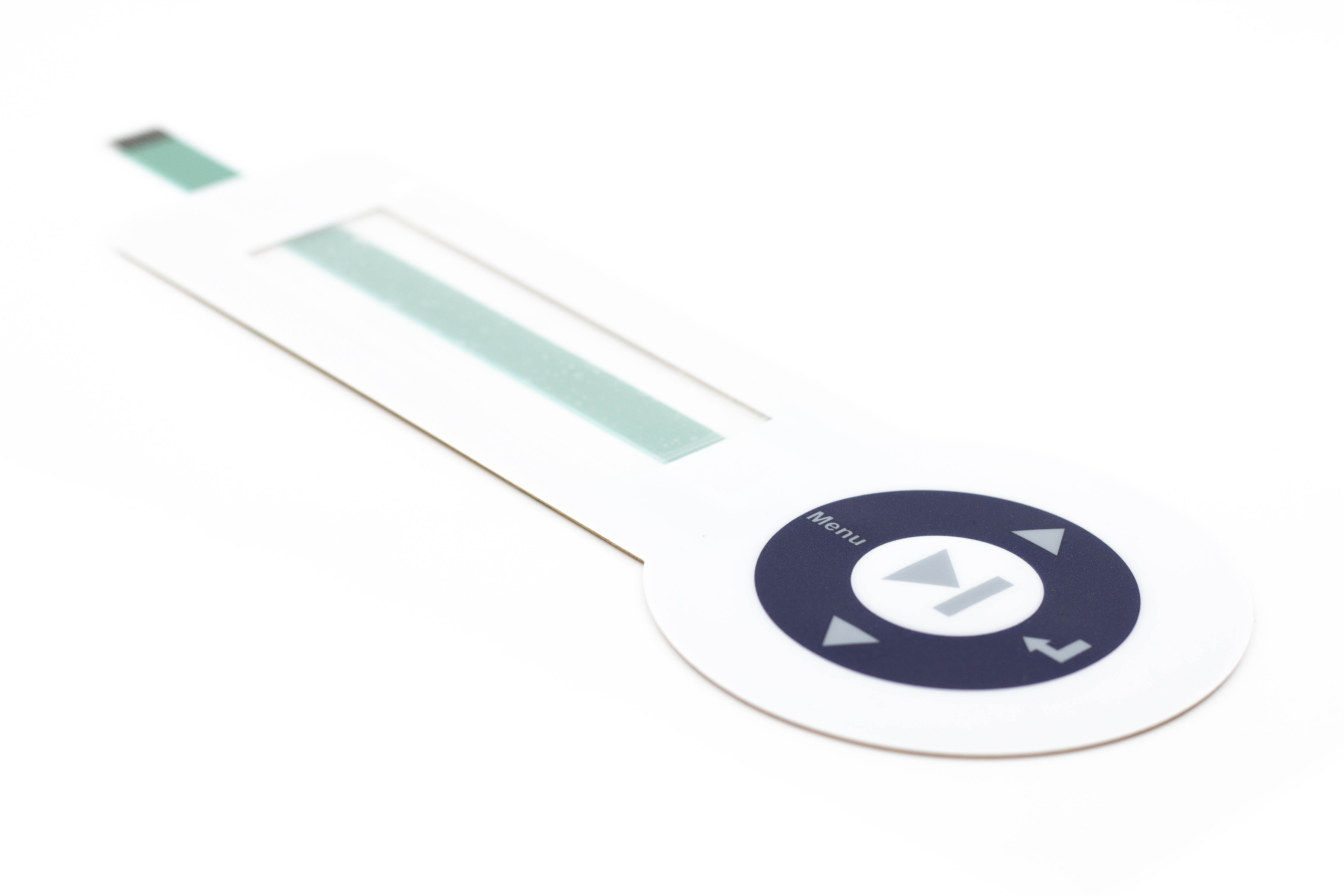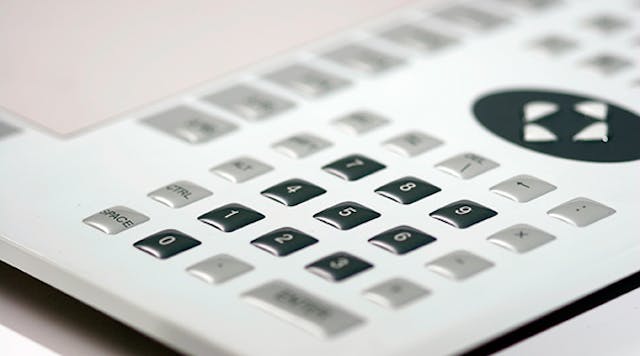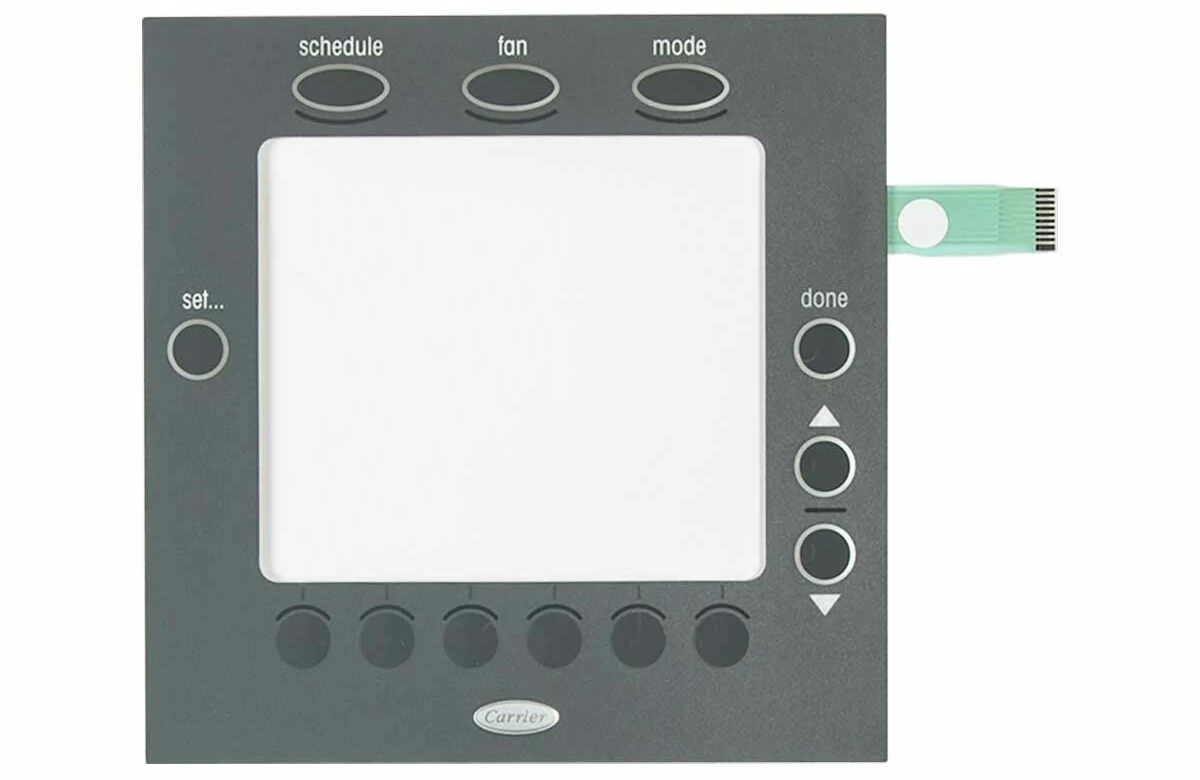Recognizing the Importance of Membrane Switches in Interface
Membrane buttons are important elements in the style of efficient user interfaces, facilitating not only performance yet additionally boosting visual allure and individual communication. Their distinct functions, such as resistance to ecological factors and customizable styles, make them appropriate for a diverse variety of applications across multiple sectors. As we explore the different advantages and future trends connected with Membrane technology, it comes to be clear that these buttons are greater than just components; they represent a merging of technology and functionality. The implications of this technology on customer experience deserve checking out further.
What Are Membrane Buttons?

The spacer layer, which has sticky buildings, enables the separation of the circuit layer from the overlay, guaranteeing that the button continues to be in a non-activated state till pressed. When stress is put on the overlay, it compresses the spacer layer, connecting the void and finishing the circuit in the underlying layer. This layout not just lowers the physical area required for conventional mechanical switches but additionally boosts the durability of the tool, as Membrane buttons are normally immune to dirt, dampness, and other ecological variables.
Frequently found in applications ranging from customer electronic devices to clinical devices, Membrane buttons are important to modern technology, offering a straightforward and reliable user interface that lines up with modern design demands.
Advantages of Membrane Buttons
While countless button technologies exist, Membrane Switches offer distinctive benefits that make them specifically preferable in various applications. Among the main advantages of Membrane buttons is their compact layout, which allows for space-saving implementations in gadgets where realty is limited. Their slim profile not just enhances visual allure but also facilitates light-weight construction.
Another considerable benefit is their resistance to environmental variables. Membrane buttons are typically secured versus moisture, dust, and impurities, making them perfect for usage in requiring environments, such as medical tools and industrial tools. This resilience expands the life expectancy of the switch, decreasing upkeep prices and boosting integrity.
In addition, Membrane buttons can be tailored to fulfill particular design demands, integrating special graphics and shades that improve customer interaction. Their tactile feedback alternatives can additionally be tailored to supply a gratifying individual experience. Furthermore, Membrane buttons are cost-effective, specifically in high-volume applications, as they can be produced efficiently.
Applications in Various Industries

In the customer electronics industry, Membrane switches prevail in tools such as microwaves, cleaning makers, and remotes. Their responsive responses and aesthetic options improve customer experience while providing a sleek, modern-day appearance. Additionally, auto suppliers use Membrane switches in control panel controls and infomercial systems, where area is restricted, and user engagement is critical.
Moreover, the industrial market leverages Membrane switches in control panels for equipment and equipment, enabling intuitive operation in usually extreme environments. Their resistance to chemicals and wetness guarantees longevity and dependability in these applications. Generally, the adaptability of Membrane Switches contributes substantially to their widespread use, making them important in various technological domain names.
Design Considerations for Membrane Buttons

When creating Membrane buttons, several crucial considerations have to be taken into account to guarantee optimum capability and user experience. Firstly, the selection of products is essential; selecting long lasting, top quality substratums can boost the switch's long life and resistance to environmental factors such as dampness and temperature variations.
Secondly, the style of the visuals overlay should focus on clarity and convenience of usage. Icons and message have to be clear, and the format ought to assist in instinctive interaction (membrane switches). In addition, tactile feedback is necessary; incorporating a tactile dome or various other systems can enhance the customer experience by providing physical confirmation of activation
One more essential aspect is the button's electrical performance. Developers need to make official site sure that the conductive traces are correctly made to lessen resistance and avoid signal disturbance. This involves analyzing the needed actuation force and making certain compatibility with the digital parts they will interface with.

Future Fads in Membrane Innovation
As innovation remains to advance, Membrane buttons are positioned to advance significantly, driven click site by innovations in materials and making strategies. One arising pattern is the unification of advanced products, such as flexible substrates and conductive inks, which enhance longevity and lower the general weight of Membrane buttons. These products not only boost the tactile response but likewise permit the layout of switches that can hold up against harsher ecological problems.
Moreover, the assimilation of touch-sensitive modern technologies is changing traditional Membrane Switches right into more interactive interface. Capacitive touch sensing units installed within Membrane button panels can supply a much more user-friendly and responsive user experience, aligning with the growing demand for smooth, modern-day styles in consumer electronic devices.
Additionally, improvements in printing methods, such as electronic and 3D printing, make it possible for fast prototyping and customization of Membrane switches. This adaptability allows producers to respond faster i was reading this to market needs and customer preferences.
Finally, sustainability is becoming a substantial emphasis, with producers checking out environmentally friendly products and procedures. As these fads unfold, the future of Membrane technology guarantees improved capability, visual appeal, and environmental duty, strengthening their role in advanced interface across different industries.
Final Thought
In verdict, Membrane Switches stand for an essential part in the design of customer interfaces, combining capability with visual versatility. As developments in technology proceed, the advancement of Membrane buttons is expected to additional fine-tune user interfaces, driving technology and improving use in a progressively complicated technical landscape.
Membrane switches are indispensable parts in the layout of reliable individual interfaces, assisting in not just performance yet additionally enhancing aesthetic charm and customer communication.Membrane Switches serve as an essential component in different individual interfaces, helping with a seamless interaction between users and electronic devices.While many button innovations exist, Membrane Switches offer distinct advantages that make them particularly preferable in various applications.Moreover, Membrane switches can be customized to meet particular style demands, integrating one-of-a-kind graphics and colors that boost individual communication.In verdict, Membrane Switches represent a vital part in the style of user interfaces, combining functionality with aesthetic versatility.